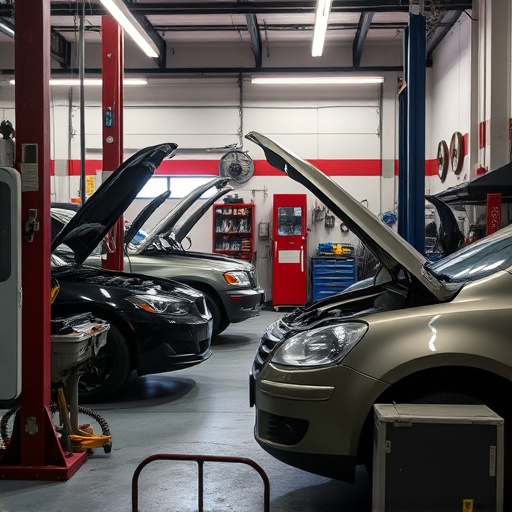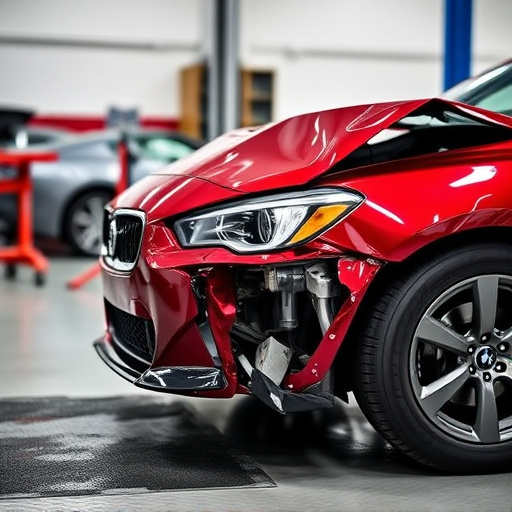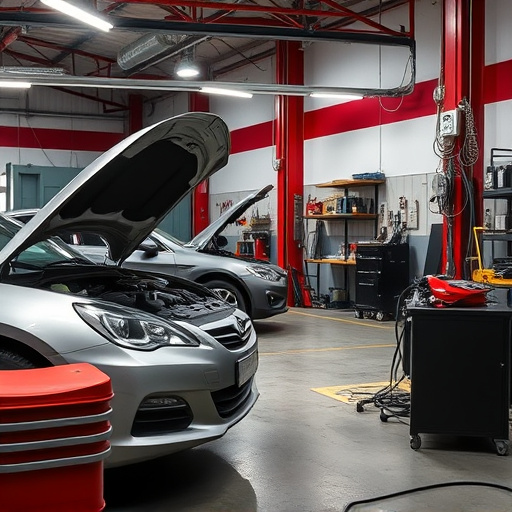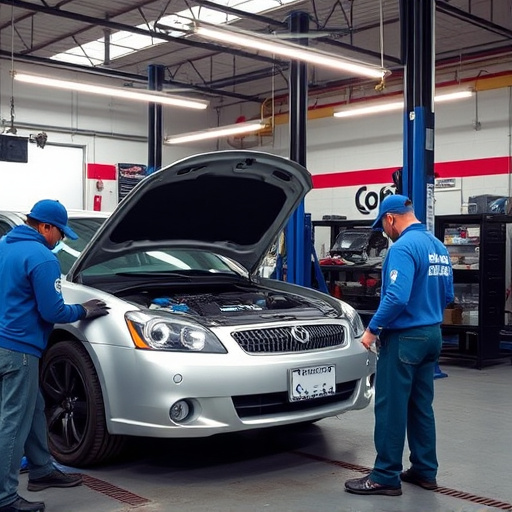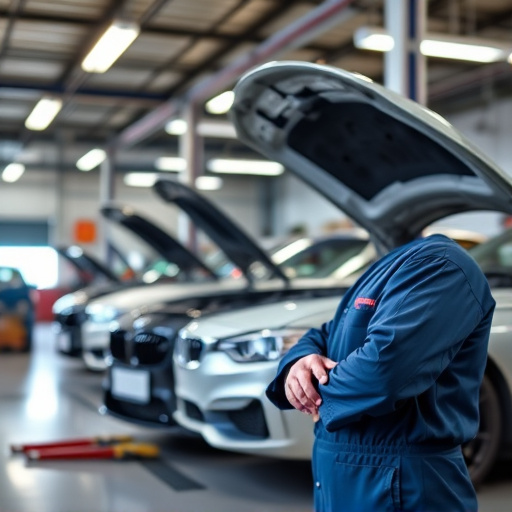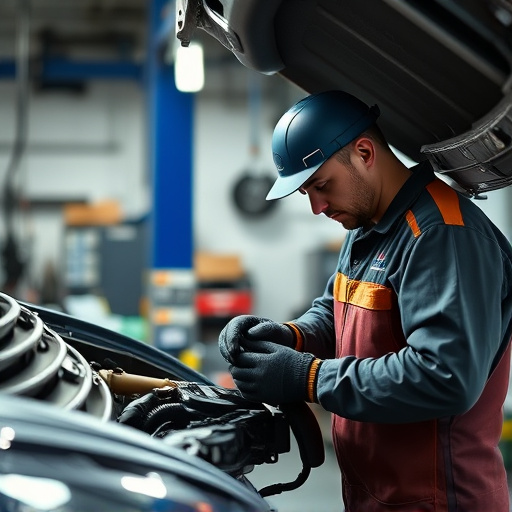Modern vehicles incorporate crucial pedestrian safety features like airbags, crumple zones, and robust frameworks. Regular maintenance and timely repairs by specialized collision centers ensure these features function optimally, enhancing vehicle safety ratings. Proactive management by local governments through strategic planning, infrastructure assessments, data analysis, community consultations, and tailored strategies can significantly reduce accident risks and prioritize public safety, making streets safer for pedestrians and vehicles alike. Continuous evaluation using both quantitative and qualitative methods ensures the effectiveness of implemented changes.
Pedestrian safety is a paramount concern in urban planning and transportation design. Implementing and maintaining pedestrian safety features, such as well-lit paths, crosswalks, and speed bumps, significantly reduces the risk of injuries and fatalities. This article delves into how regular repair and maintenance of these features directly impact safety ratings, exploring strategies for effective implementation and evaluation to ensure optimal protection for pedestrians across diverse environments.
- Understanding Pedestrian Safety Features
- The Impact of Repair on Safety Ratings
- Strategies for Effective Implementation & Evaluation
Understanding Pedestrian Safety Features
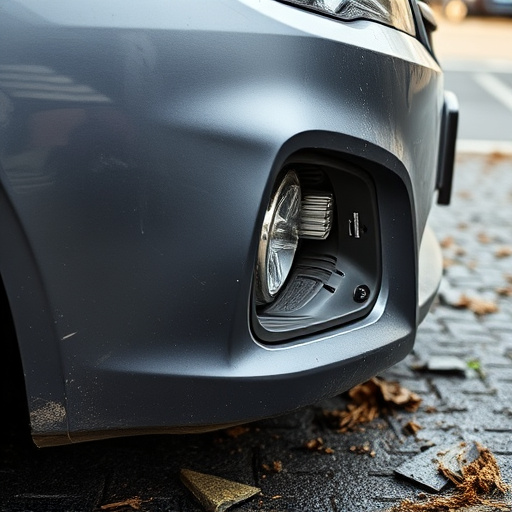
Pedestrian safety features are integral components of modern vehicles designed to protect not only drivers and passengers but also pedestrians in case of accidents. These features include advanced airbags, crumple zones, and robust frameworks that absorb impact energy during a collision. Understanding these safety mechanisms is key when assessing vehicle reliability and safety ratings. Regular maintenance and repairs of these features are essential to ensure their optimal performance when needed most.
By addressing pedestrian safety features repair, vehicle owners can actively contribute to enhancing overall safety on the roads. Collision centers offering specialized collision repair services understand the critical nature of these safety mechanisms. Skilled technicians are trained to meticulously inspect, fix, or replace damaged components, ensuring vehicles meet stringent safety standards. Just as a vehicle dent repair technician restores a car’s aesthetic appeal, pedestrian safety feature repairs safeguard its operational integrity and could very well be a game-changer in preventing severe injuries or fatalities.
The Impact of Repair on Safety Ratings
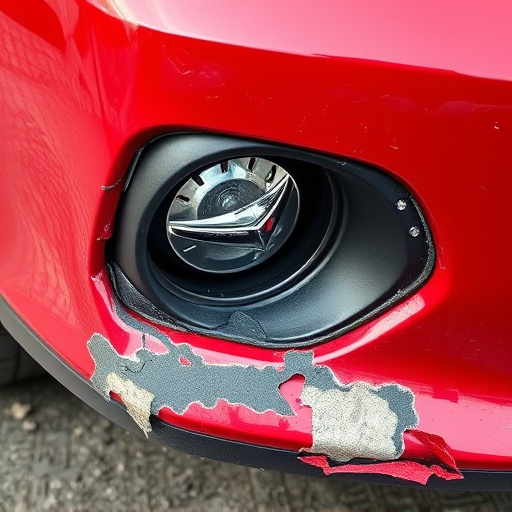
When it comes to evaluating safety, especially in urban areas, the condition and functionality of pedestrian safety features play a pivotal role. Regular repairs and maintenance of these critical components can significantly influence vehicle safety ratings. A simple example is the impact of auto glass repair; clear, intact windows are essential for drivers’ awareness of their surroundings, including pedestrians. Similarly, pedestrian safety features like well-maintained crosswalks, reflective markings, and secure lighting systems, when repaired promptly, contribute to enhanced visibility and overall safety for everyone on the road.
Moreover, auto body repairs are not just about aesthetics; they address structural integrity, which is crucial in accident prevention. By ensuring that pedestrian safety features are consistently repaired and updated, local governments and transportation authorities can strive for higher safety ratings. This proactive approach not only reduces the risk of accidents but also fosters a culture of vigilance and responsibility toward public safety, making our streets safer for pedestrians and vehicles alike.
Strategies for Effective Implementation & Evaluation
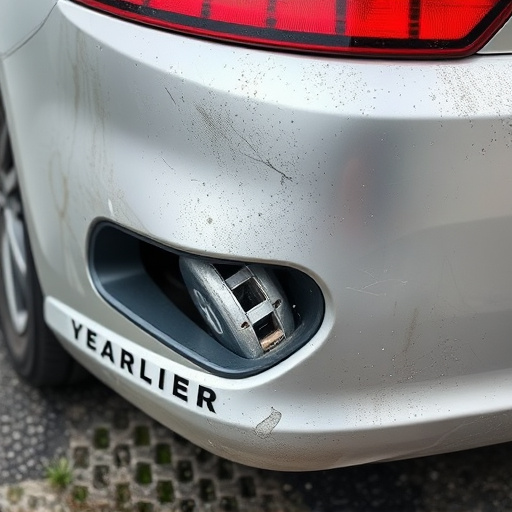
Implementing and evaluating pedestrian safety features repair involves strategic planning to ensure effectiveness. Firstly, identifying specific areas that require enhancement is crucial. This may involve assessing existing infrastructure, gathering data on accident rates, and consulting with local authorities and community members. Once hot spots are identified, tailored strategies can be developed. These might include adding crosswalks, improving street lighting, or installing advanced traffic signals designed to prioritize pedestrian crossings.
Evaluation should be an ongoing process that leverages both quantitative and qualitative methods. Measuring the impact of repairs through metrics like accident reduction rates, pedestrian satisfaction surveys, and observation of behavioral changes provides valuable insights. Integrating feedback from the community and stakeholders helps refine strategies and ensures solutions align with local needs. Efficient implementation requires collaboration between city planners, engineers, auto body services, and residents, fostering a comprehensive approach to enhancing pedestrian safety features repair.
Pedestrian safety features repair plays a pivotal role in enhancing overall safety ratings, as highlighted throughout this article. By understanding the critical components and implementing effective strategies, cities can significantly reduce risks for pedestrians. Investing in regular maintenance and repairs not only improves infrastructure but also sends a strong message about community well-being and sustainability. Incorporating these practices into urban planning ensures safer streets for all, fostering vibrant and accessible public spaces.



